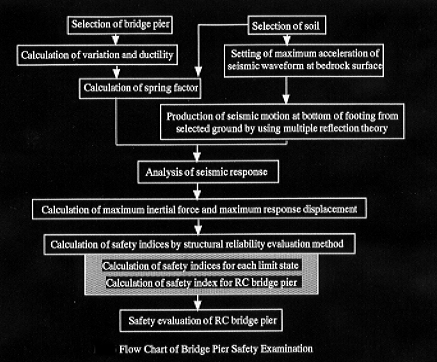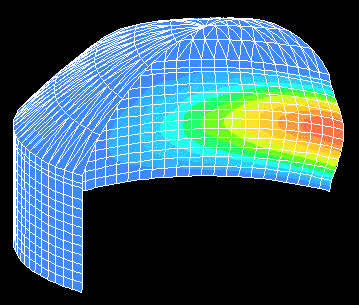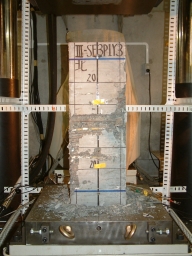Reliability-Based Design Method:
 Reliability-based design is founded on the concept that one can estimate the probability of an undesirable event such as a fracture, occurring over the lifetime of a structure, despite the uncertainties involved. It is a design method that provides an assured level of safety by reducing the probability of such an occurence below a target value.
Reliability-based design is founded on the concept that one can estimate the probability of an undesirable event such as a fracture, occurring over the lifetime of a structure, despite the uncertainties involved. It is a design method that provides an assured level of safety by reducing the probability of such an occurence below a target value.
The quality of a design is judged by comparing the failure probablity with the target failure probablity, and this use of the failure probability makes it possible to evaluate the safety of a structure quantitatively. Above all, this design method enables one to gain a firm grasp of the safety level desired, and to design a structure so as to attain the prescribed reliablity independently of other design requirements.
Adapting this point of view, our study aims to propose a new concept of seismic design based on reliability theory.
Dynamic Behavior of Reinforced Concrete Strcutures:
 Seismic performance of the RC bridge pier has drawn a considerable engineering attention after the devastating damege of the Hanshin Highway viaduct due to the Hyogo-Ken Nanbu Earthquake (January 17, 1995). Now the following problems are thought to require further discussion.
Seismic performance of the RC bridge pier has drawn a considerable engineering attention after the devastating damege of the Hanshin Highway viaduct due to the Hyogo-Ken Nanbu Earthquake (January 17, 1995). Now the following problems are thought to require further discussion.
(a)The effects of the soil-pile interaction modeling on the seismic response of RC pier structures are studied. Special attention is paid to the response of the superstructure due to the nonlinear behavior of soil and piles in the interaction.
(b)It is necessary to study the behavior of RC-2 story viaducts and to consider the effect of the damage of their members on the seismic performance of such structures during defferent strong earthquake waves.
(c)The response analysis of reinforced concrete and prestressed concrete structures subjected to strong earthquake motions requires a realistic conceptual model which recognizes the continually varying stiffness and energy-absorbing characteristics of the structure. This study aims to propose a new force-displacement relationship. And the dynamic responses, based on the proposed characteristics of the RC and PC structures, are calculated and discussed.
The Strength Evaluation in Reinforced Concrete Beams Using Ultra-High Strength Materials:
 The objective of this study is to investigate the strength of the reinfoced concrete beams using ultra-high strength materials. Such strength must be defined clearly and assessed properly before the RC members using ultra-high strength concrete and bar can be used with confidence in structural members.
The objective of this study is to investigate the strength of the reinfoced concrete beams using ultra-high strength materials. Such strength must be defined clearly and assessed properly before the RC members using ultra-high strength concrete and bar can be used with confidence in structural members.
Now adapting this point of view, concrete beams using ultra-high strength concrete and bar are tested under monotonically increasing loads to evaluate the shear strength. The beams are singly reinforced without shear reinforcements. The concrete strength is varied from 90 MPa to 150 MPa. The following picture is specimen on conclusion of test.
On the basis of experimental results, the equation of shear capacity without shear reinforcements for RC members using ultra-high strength materials will be proposed.

